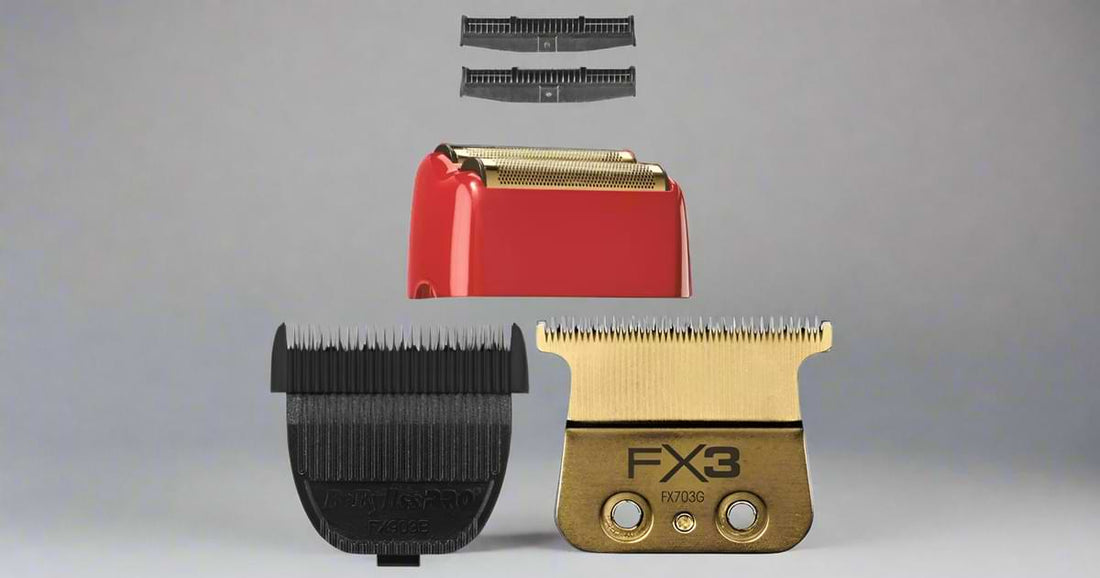
Best Clipper Blades for Every Hair Type 2025
Share
How to Choose the Right Clipper Blade for Different Hair Types
Whether you’re a professional barber, stylist, or someone cutting hair at home, choosing the right clipper blade is one of the most important steps for achieving a clean, precise, and irritation-free haircut. Hair texture varies—fine, coarse, curly, or thick—and each type requires a specific blade design to deliver smooth cuts without tugging or uneven lines.
In this in-depth guide, you’ll learn:
- Why clipper blade selection matters
- The best blades for fine, coarse, and curly hair
- Professional techniques to avoid irritation
- Blade care and maintenance tips to extend lifespan
- FAQs to clear common doubts
By the end, you’ll know exactly which clipper blade fits your needs and how to get the best results every time.
Why Clipper Blades Matter
Not all clipper blades are created equal. The right blade ensures:
- Precision: Sharp lines and fades without patchy spots.
- Comfort: Less tugging, pulling, or razor burn.
- Efficiency: Faster cutting, especially on dense or curly hair.
- Durability: High-quality blades last longer and stay sharp.
Choosing the wrong blade can result in:
- Uneven hair length
- Extra passes (causing skin irritation)
- Hair pulling and discomfort
- Shorter blade lifespan
For barbers, using the correct blade builds trust and repeat customers. For at-home users, it ensures professional results without costly mistakes.
Best Clipper Blades for Fine Hair
Fine hair is soft, fragile, and easy to damage if cut with the wrong blade. The goal is a smooth, gentle cut without pulling.
-
Recommended Blade: Taper blades
- Designed with a longer cutting angle for gradual blending.
- Perfect for precision fades and natural looks.
-
Best Use Cases:
- Gentle fades and tapers
- Detail trimming around ears and neckline
- Children’s haircuts (delicate strands)
-
Pro Tips:
- Always oil the blade before cutting fine hair.
- Work slowly and avoid pressing too hard.
- Use guards for extra protection against nicks.
Best Clipper Blades for Coarse or Thick Hair
Coarse or thick hair requires strength and sharpness to glide through dense strands. Using the wrong blade can result in snags and uneven cuts.
-
Recommended Blade: Fade blades or ceramic blades
- Fade blades have a flat cutting angle, perfect for precision on thick hair.
- Ceramic blades stay cooler and sharper longer, ideal for bulk cutting.
-
Best Use Cases:
- Buzz cuts and close fades
- Bulk removal before styling
- Heavy-duty barbering work
-
Pro Tips:
- Pair with a high-torque rotary motor clipper.
- Always start with a higher guard to avoid over-cutting.
- Clean blades frequently—coarse hair builds residue faster.
Best Clipper Blades for Curly & Textured Hair
Curly and textured hair needs a blade that cuts evenly through curves without creating patchy spots.
-
Recommended Blade: Wide-tooth blades or detachable blade systems
- Wide teeth allow for smoother gliding across curls.
- Detachable systems give flexibility to switch blade sizes quickly.
-
Best Use Cases:
- Shaping natural curls
- Blending afro styles
- Maintaining even lengths across wavy or coiled hair
-
Pro Tips:
- Stretch hair slightly while cutting to maintain consistency.
- Avoid pressing too hard—let the blade glide naturally.
- Moisturize hair before cutting to reduce frizz.
Other Blade Types to Consider
- Skip Tooth Blades: Excellent for texturizing, but not for beginners.
- Surgical Blades: Ultra-close cuts for bald fades or skin fades.
- Adjustable Blades: Great for versatility in home use.
- Specialty Blades: Such as square or rounded edges for creative styling.
Each blade has its unique use—barbers often keep multiple blades on hand to switch depending on client needs.
How to Maintain Clipper Blades for Longevity
Even the best blade won’t perform well without proper care. Follow these steps:
- Oil Blades Regularly: Apply 2–3 drops before and after each use.
- Disinfect: Use clipper spray or alcohol after every haircut.
- Clean with Blade Wash: Remove hair residue that dulls blades.
- Align Correctly: Ensure top and bottom blades are parallel to avoid cuts.
- Replace When Needed: If you feel pulling, snagging, or dullness, it’s time to replace.
With the right care, professional clipper blades can last months or even years.
Frequently Asked Questions
Q: Can I use the same blade for all hair types?
Technically yes, but performance suffers. Specialized blades give better results for each hair texture.
Q: How often should I replace my clipper blades?
Every 6–12 months with heavy use, but proper care can extend lifespan.
Q: Do ceramic blades really stay cooler?
Yes. Ceramic blades generate less heat and stay sharper longer than stainless steel.
Q: What blade is best for beginners at home?
Adjustable taper blades—they’re versatile and easy to control.
Q: Are detachable blades worth the investment?
For barbers, absolutely. They allow flexibility and save time. For home use, they may not be necessary.
Final Thoughts:
The right clipper blade makes all the difference between a flawless fade and a frustrating haircut.
- Fine hair → Taper blades for smooth precision
- Coarse hair → Fade or ceramic blades for power and sharpness
- Curly hair → Wide-tooth or detachable blades for even results
By understanding your client’s (or your own) hair type and matching the right blade, you’ll achieve professional, comfortable, and long-lasting results every time.
Looking for premium clipper blades and barber tools? Explore our [Replacement Blade's collections] and upgrade your grooming game today.
